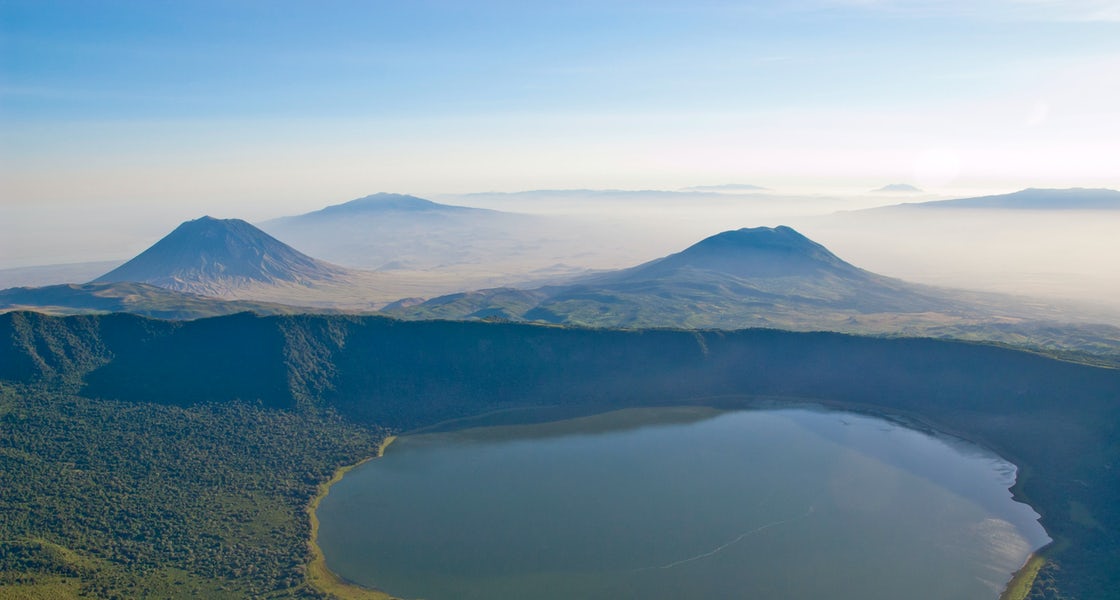Ngorongoro Conservation Area – Attractions & How to get there
Ngorongoro Conservation Area which is located in northern Tanzania is home to the vast, volcanic Ngorongoro Crater and “big 5” game (elephant, lion, leopard, buffalo, rhino). Huge herds of wildebeests and zebras traverse its plains. During their annual migration, herds of wildebeests and zebras traverse the Ngorongoro plains. Livestock belonging to the semi-nomadic Maasai tribe graze alongside wild animals. Hominin fossils found in the Olduvai Gorge date back millions of years. The area is named after Ngorongoro Crater, a large volcanic caldera within the area. The Ngorongoro Conservation Area (NCA) is a protected area and a World Heritage Site located 180 km (110 mi) west of Arusha in the Crater Highlands area of Tanzania. The conservation area is administered by the Ngorongoro Conservation Area Authority, an arm of the Tanzanian government, and its boundaries follow the boundary of the Ngorongoro Division of the Arusha Region.

How to get there
By Air
One needs to fly to Kilimanjaro International Airport at Moshi, situated at the foot of Mount Kilimanjaro. From there one can get a charter flight, take a taxi or make use of the free shuttle service. The distance from Moshi to Arusha is about 55km.
By Road
The road from Arusha to Lodoare Entrance Gate is 160km long. The entire journey is on tarmac and it takes about two hours. Unless you stay on the main roads, which are graveled, a 4×4 vehicle is essential when entering the Ngorongoro Conservation Area and the Serengeti National Park.
Attractions in Ngorongoro Conservation Area
The Ngorongoro Crater together with the surrounding highlands forms one of Africa’s most spectacular regions. Volcanic craters form stunning backdrops to some of the most fertile and richest grazing grounds in Africa. Ngorongoro is the world’s largest intact volcanic caldera and is the most famous. It is a habitat to the highest density of big game in Africa, including all the big five and plenty of predators.
Oduvai Gorge Museum. The Olduvai Gorge is a steep-sided ravine in the Great Rift Valley, which stretches along eastern Africa. Oldupai is in the eastern Serengeti Plains in northern Tanzania and is about 50 kilometres (31 mi) long. It lies in the rain shadow of the Ngorongoro highlands and is the driest part of the region.
Masai tribe. The Masai are an authentic culture centered tribe and have tried their best to keep their culture alive. The Masai are cattle keepers and are popularly known for their folk songs and dances. These attract so many tourists.
Wildlife. The star attraction of the Conservation area is the Ngorongoro crater: an extinct volcano teeming with wildlife often compared to the Garden of Eden. Wildlife viewing in the crater is out of this world. All major animals are easily seen. The only exception is giraffe, which is present in the Conservation Area, but not in the crater because of the steep descent. Elephants are common, but only bulls, of which there are some enormous tuskers. All big cats are easily spotted and the density of spotted hyenas is quite extraordinary.

Rules while in the Park
- Keep to authorized roads and tracks. No off-road driving
- Speed limits 25 km/h in NCA
- No more than 5 vehicles around an animal or kill
- No entry to Lerai or Layanai forests
- No dogs allowed in the crater
- Visitors must not disturb or remove geological or archaeological deposits within the Oldupai Gorge
- Only vehicles equipped with standard safaris equipment allowed in the Crater (heavy-duty jack; chain/rope; shovel/hoe; axe/panga)
- Keep quiet when viewing animals in close proximity Removal of Items from the Reserve
What to Carry for Safari
It is usually cold in the morning and late nights so its necessary to carry warm clothing. Also very important to carry comfortable shoes for the walks. A camera is a must due to the very beautiful sceneries and wildlife.

